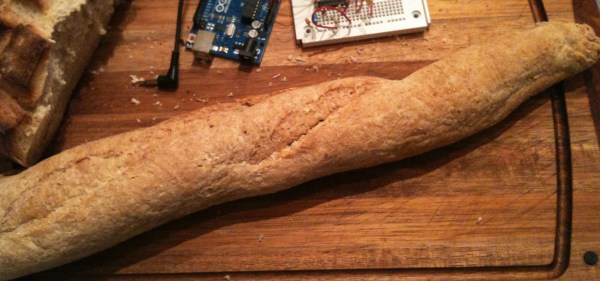While we have nothing against other 1980s 8-bit machines, the Commodore 64 has always been something special. A case in point: another new instrument using the C-64 and its beloved SID chip. Not just new to retrocomputing, either, but new entirely. [Linus Åkesson] has invented the QWERTY Theremin, and there’s a Commodore at its core.
If this project sounds vaguely familiar, it’s because it’s based off of the C-64 Theremin [Linus] built a couple of years back. According to [Linus], there were a few issues with the instrument. A real thereminist told him there were issues with the volume response; his own experience taught him that theremins are very, very hard to play for the uninitiated.
This model fixes both problems: first, the volume circuit now includes a pair of digital-analog-converters (DACs) connected to the Commodore’s user port, allowing smooth and responsive volume control.In this case the DAC is being used solely for volume control: SID provides the analog reference voltage, while the 12-bit digital input served as volume control. That proved noisy, however, thanks to the DC bias voltage of the audio output being scaled by the DAC even when the SID was silent. A second DAC was the answer, providing a signal to cancel out the scaled bias voltage. That in and of itself is a clever hack.
The biggest change is that this instrument no longer plays like a theremin. Pitch has been taken out of the 555-based antenna circuit entirely; while vertical distance from the spoon-antenna still controls volume as in a regular theremin and the last version, the horizontal distance from the second antenna (still a clamp) now controls vibrato. Pitch is now controlled by the QWERTY keyboard. That’s a much easier arrangement for [Linus] — this isn’t his first chiptune QWERTY instrument, after all.
Continue reading “The Qweremin Is A QWERTY Theremin With A C-64 Heart”

![[Linus] playing his instrument](https://hackaday.com/wp-content/uploads/2025/08/c64-queramin-feat.png?w=600&h=450)


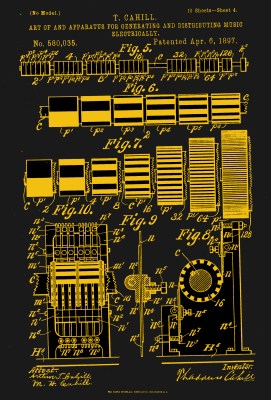
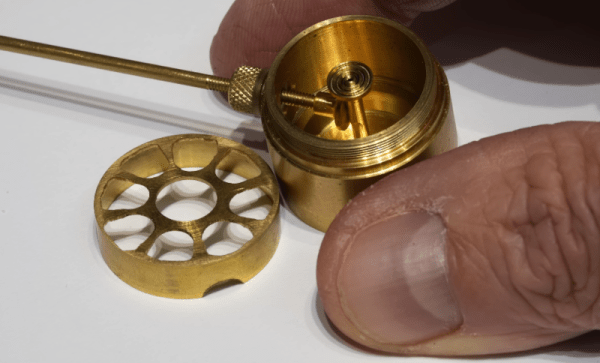
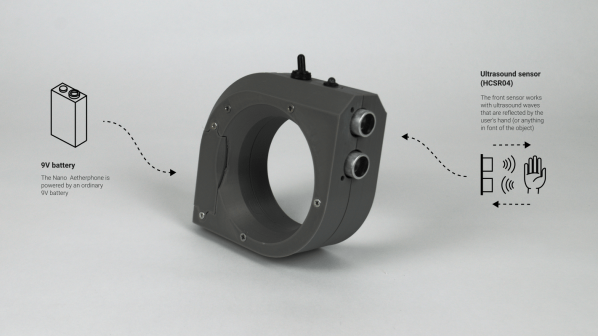
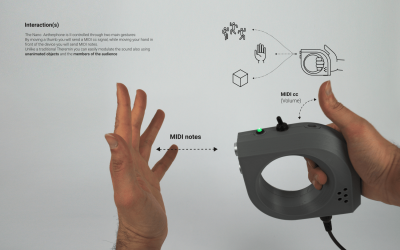 The device is inspired by the Theremin, and was built to celebrate its 100th anniversary. The Nanoaetherphone II is all about using sensors to capture data from wireless hand-wavey interactions, and turn it into MIDI messages. To this end, it has an LDR sensor for detecting light levels, which determines volume levels. This is actuated by the user’s thumb, blocking the sensor or allowing ambient light to reach it. At the front of the handheld unit, there is also an ultrasonic range sensor. Depending on how close the sensor is to the user’s hand or other object determines the exact note sent by the device. As a MIDI controller, it is intended to be hooked up to an external synthesizer to actually generate sound.
The device is inspired by the Theremin, and was built to celebrate its 100th anniversary. The Nanoaetherphone II is all about using sensors to capture data from wireless hand-wavey interactions, and turn it into MIDI messages. To this end, it has an LDR sensor for detecting light levels, which determines volume levels. This is actuated by the user’s thumb, blocking the sensor or allowing ambient light to reach it. At the front of the handheld unit, there is also an ultrasonic range sensor. Depending on how close the sensor is to the user’s hand or other object determines the exact note sent by the device. As a MIDI controller, it is intended to be hooked up to an external synthesizer to actually generate sound.